Previously I wrote about the variation in immature Ring-billed Gulls in October, using a series of photos from Cape Cod. On 18 April 2010 I devoted a little time (and a granola bar) to watching and photographing immature Ring-billed Gulls in a parking lot in Boston, MA. As always, looking closely at a common bird brings up all kinds of questions. Here is the survey of plumage variation, and I’ll follow-up with some of the questions.
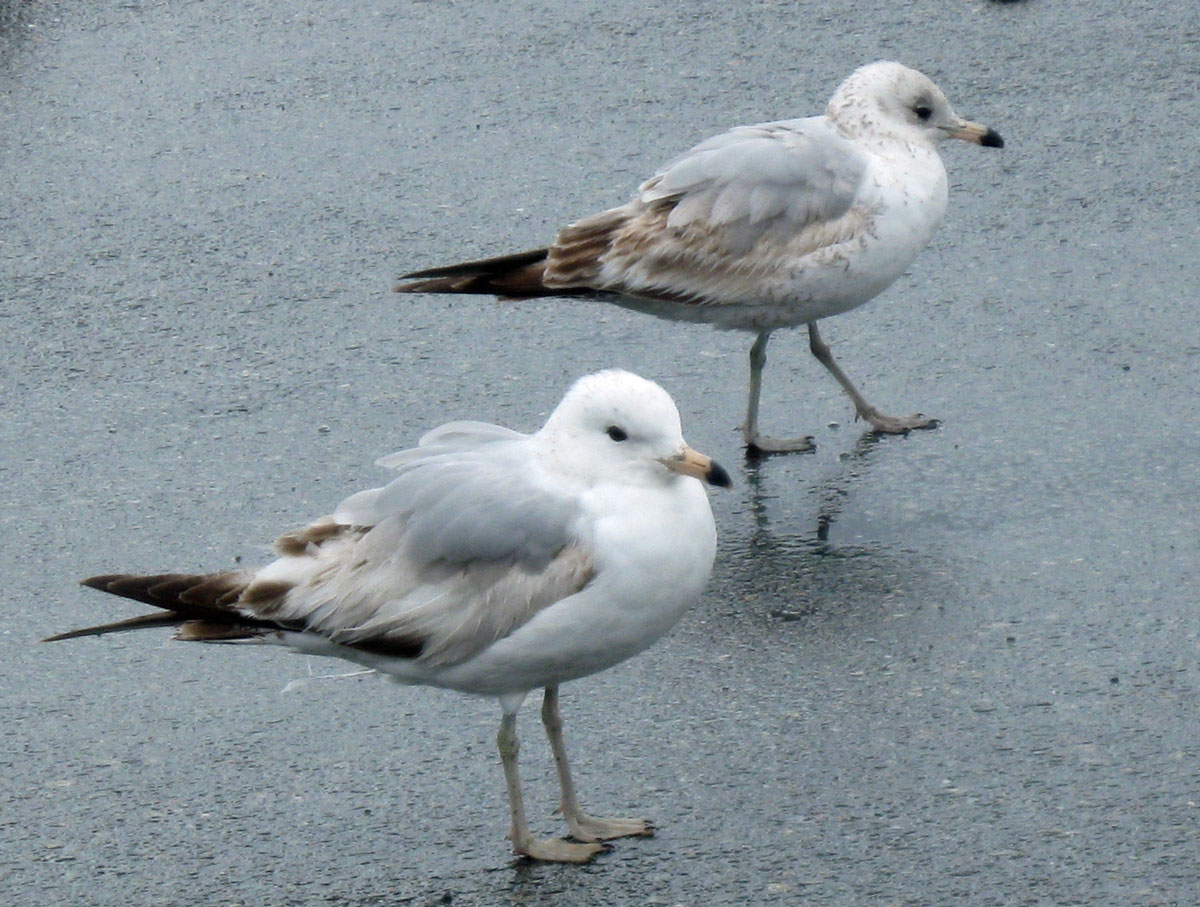
The variation in appearance comes from four main sources, which all interact:
- the intensity (darkness) of feather markings on retained juvenal feathers
- the degree of wear and fading of the feathers (which is related to darkness since pale feathers wear and fade more quickly)
- the extent of dark markings on new feathers on the head and body (which seems to be related to the darkness of the juvenal feathers)
- the extent of the spring molt which may or may not include wing coverts and tertials by this date
In the photo above, the whiter bird in the foreground has excessively worn, whitish wing coverts retained from last summer, clean white head and breast of presumably new feathers grown in the last few months, but is otherwise nearly identical to the bird behind.
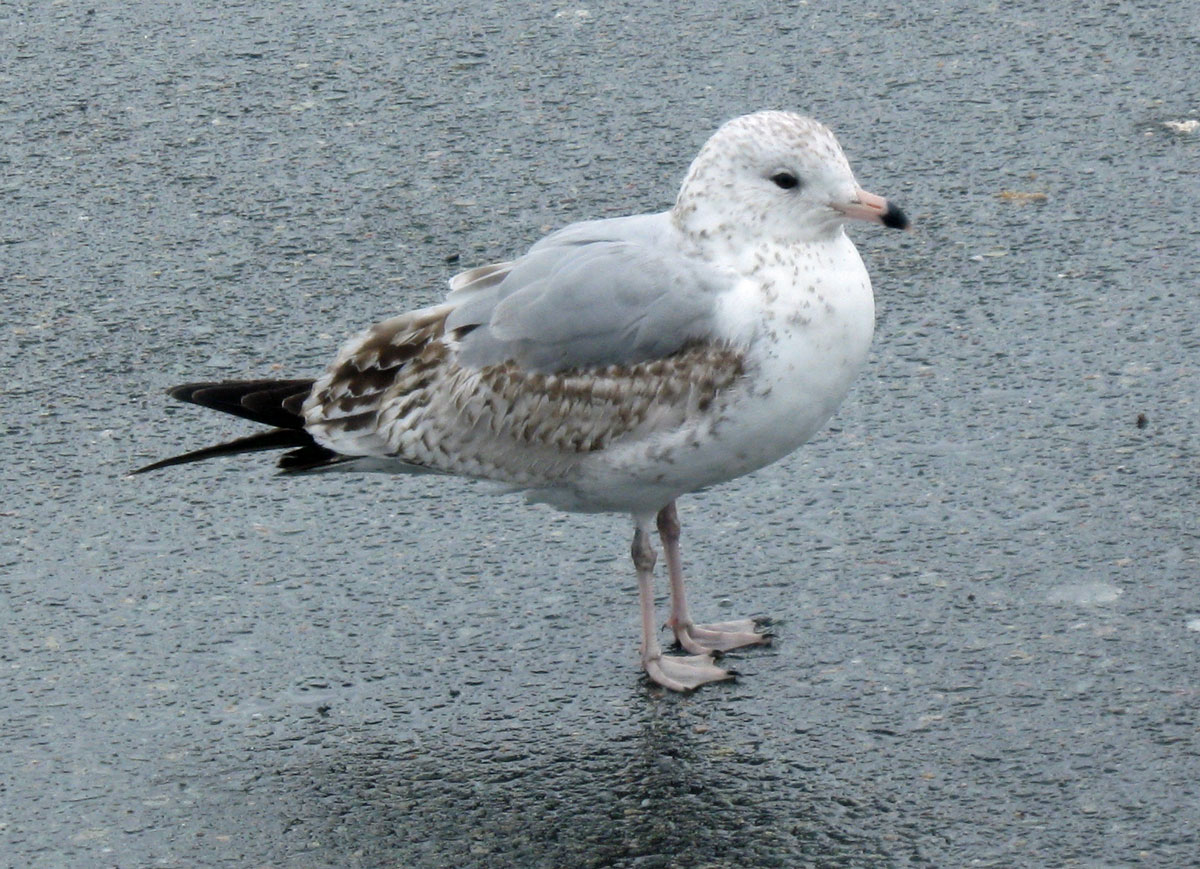
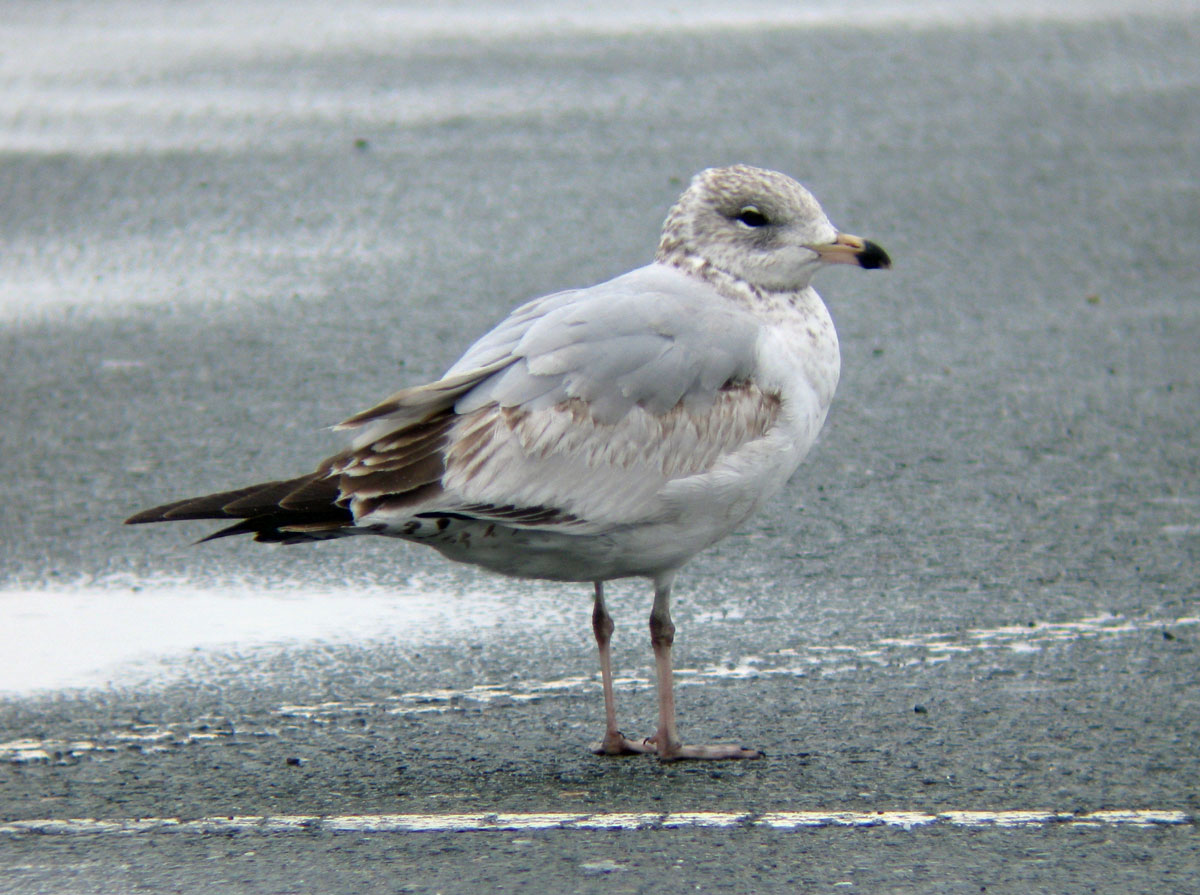
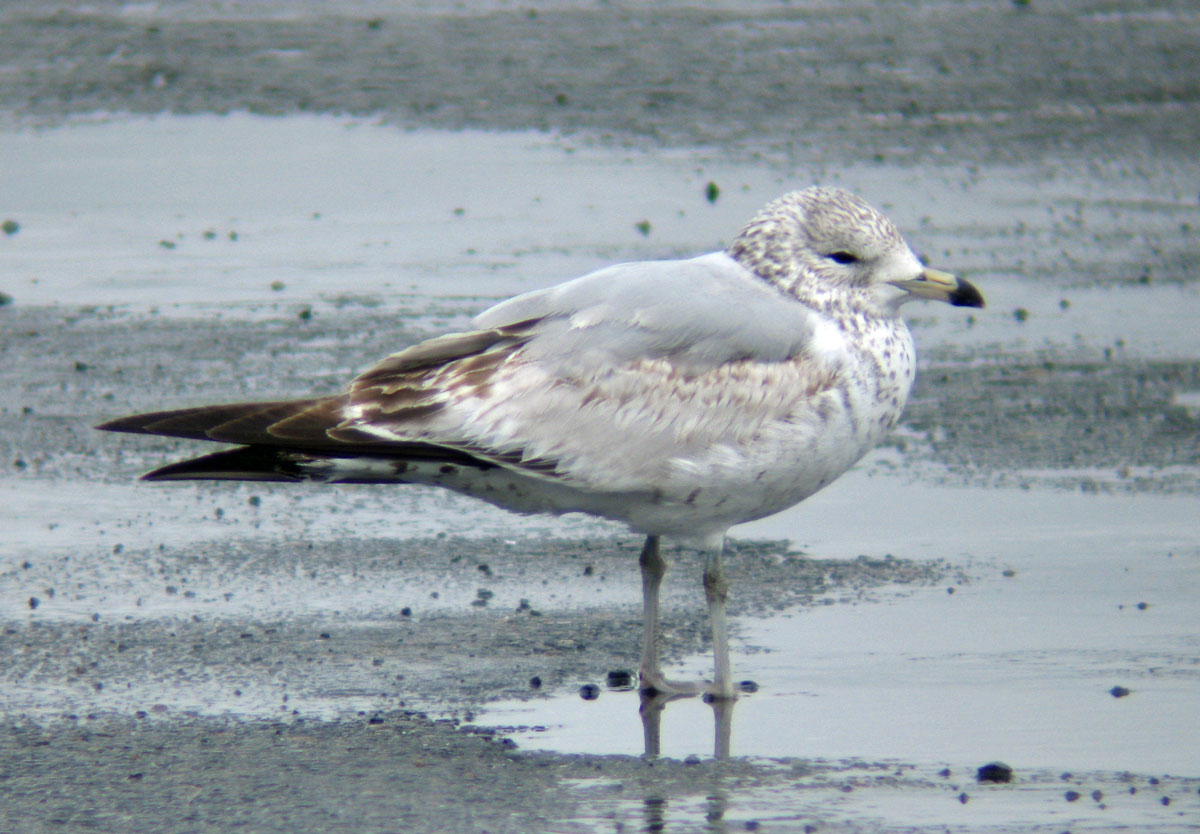
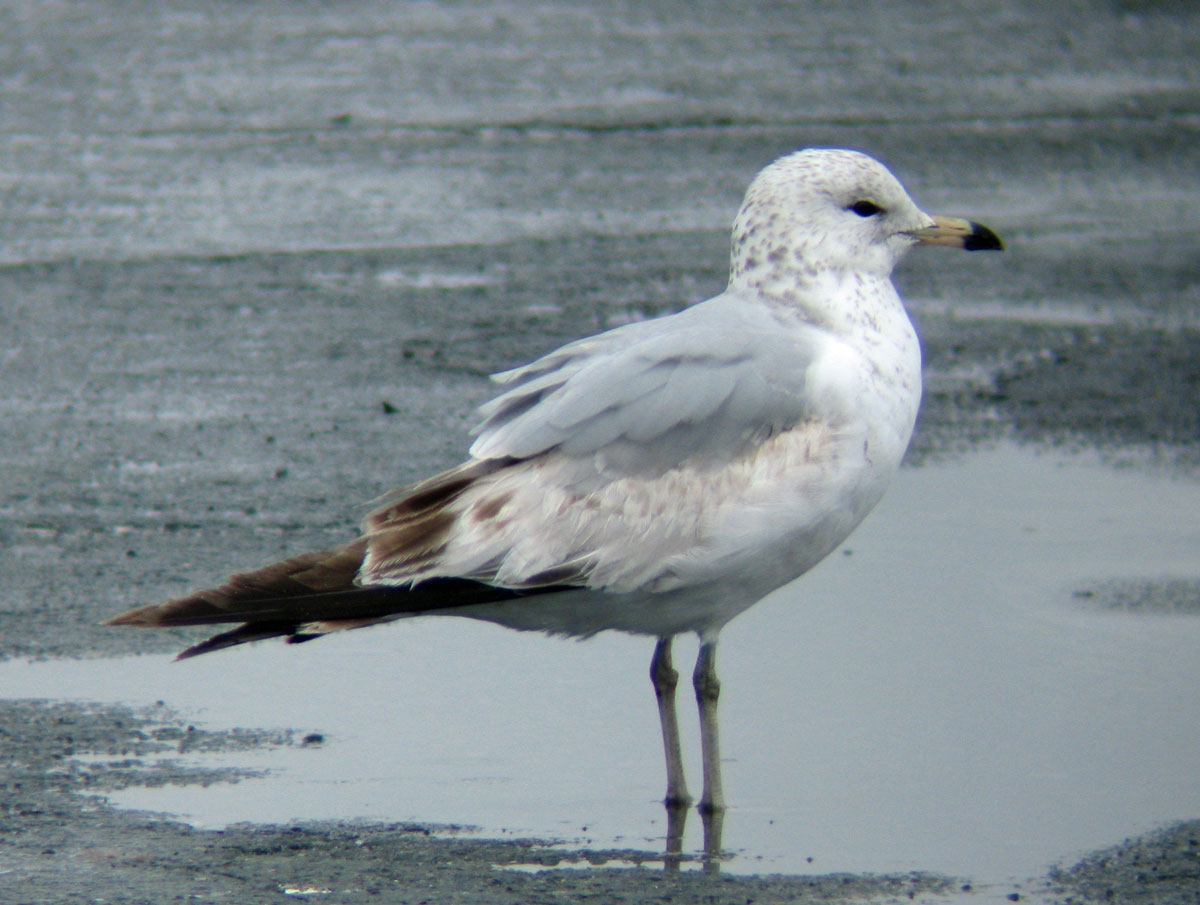
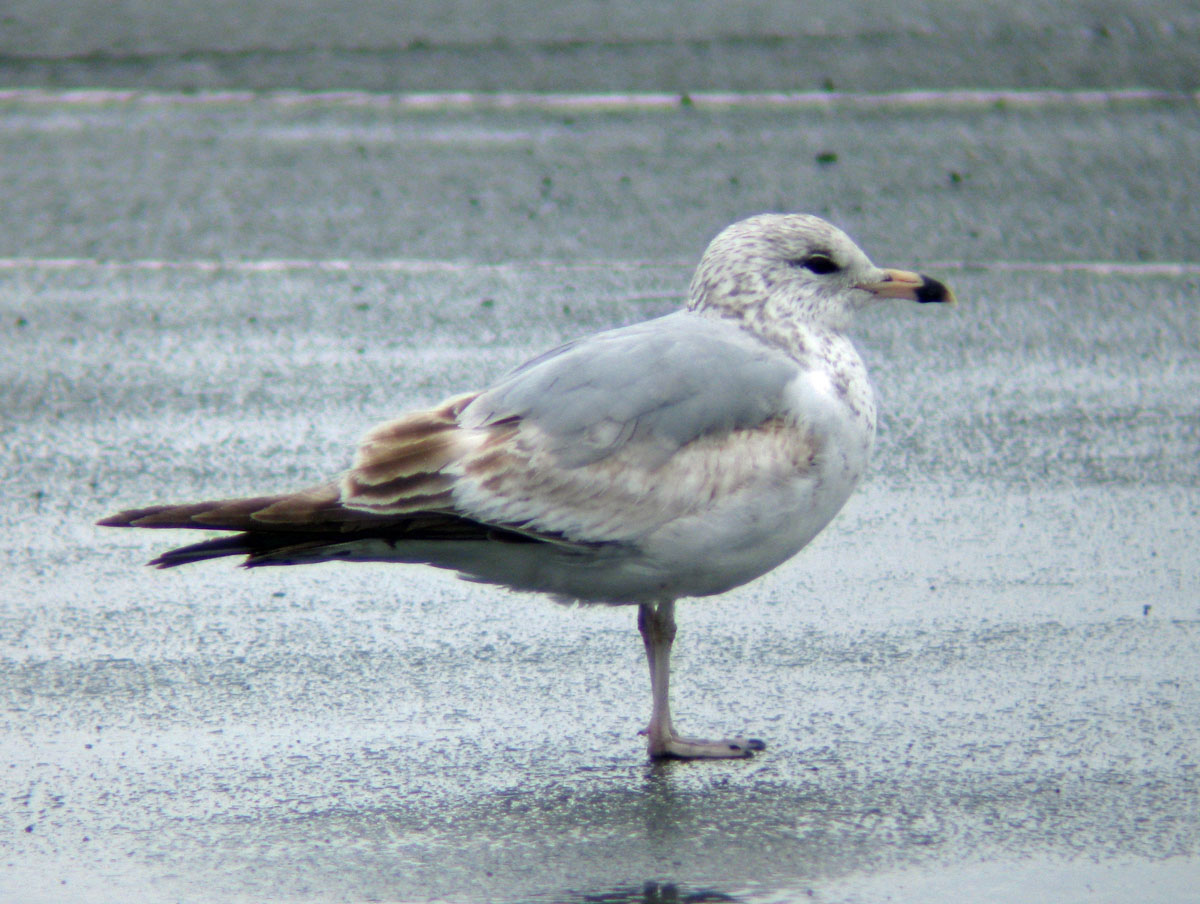
In this sample the two birds below with the most heavily worn (and very pale) wing coverts are strikingly different from the darkest bird show in figure 2 above. Presumably these very faded birds were the individuals that had the palest coverts in the fall (e.g. birds 4, 7, and 9 here). These birds now also show a very pale whitish head and breast. The head and breast feathers should have been replaced in the spring molt, while the wing coverts are retained from last summer. So the white head and breast are the result of new, unpigmented feathers, while the white coverts are the result of excessive fading on old lightly pigmented feathers. So maybe birds that produce less pigment in the fall continue that trend in the spring? Or maybe a larger sample size would show no link between extremely faded wing coverts and white heads?
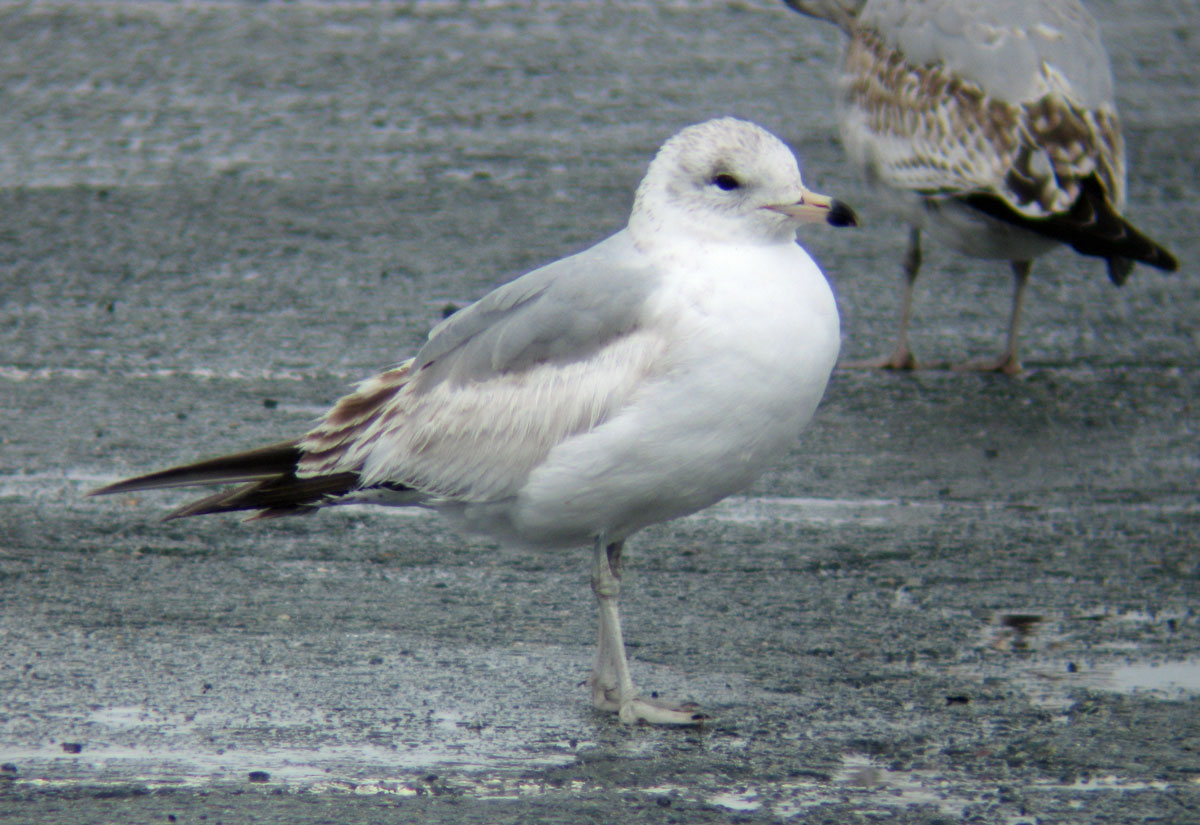
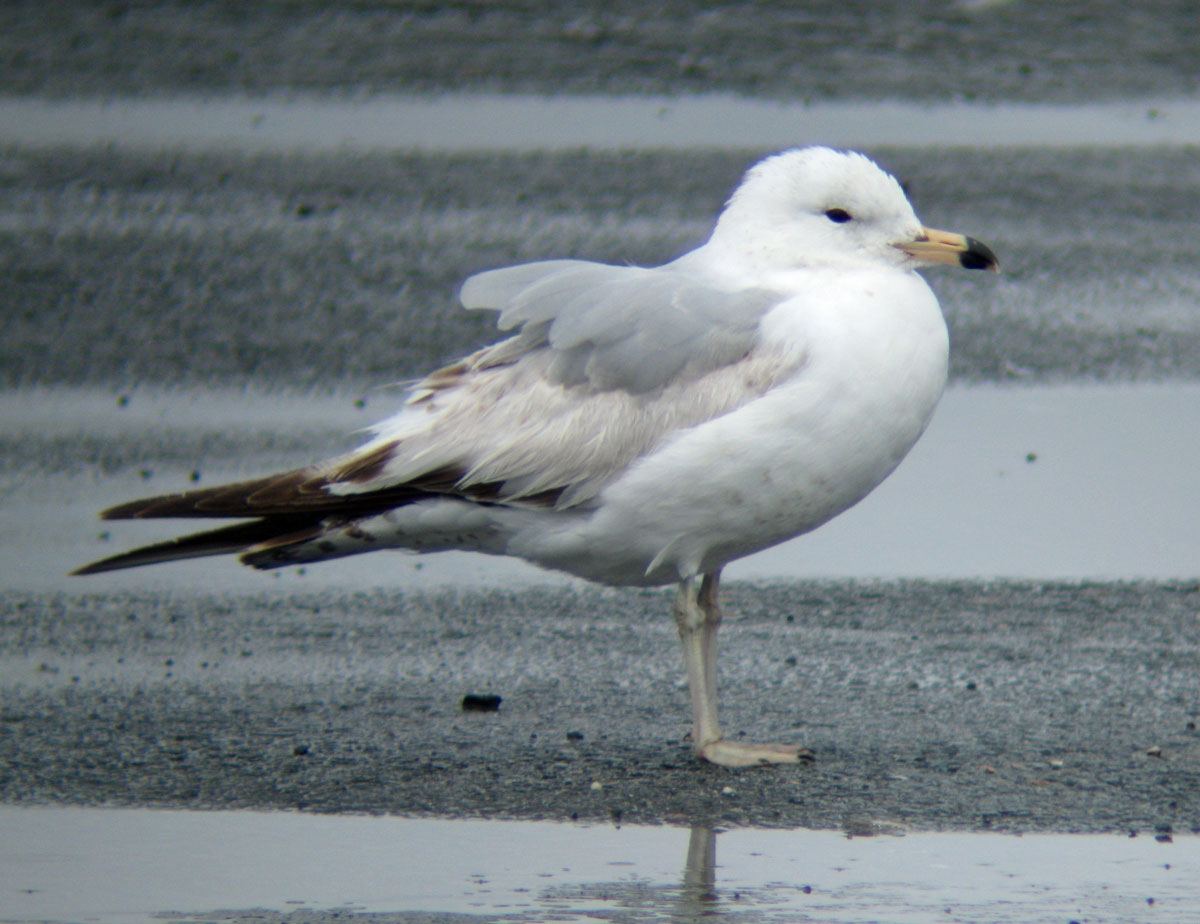
Besides variation in feather color and the intensity of wear and fading, birds can also differ in appearance depending on how many feathers have been replaced in the spring molt. The three individuals below have all replaced some wing coverts and tertials with new – grayish – feathers. A study by Kevin McLaughlin (2000) shows photos of Ring-billed (and Laughing) gulls that have replaced many of their wing coverts and tertials with new gray feathers, and his photos are from the fall. So it’s possible that these birds below actually acquired new gray coverts and tertials in their first post-juvenal molt last fall, although some additional replacement might happen in the spring.
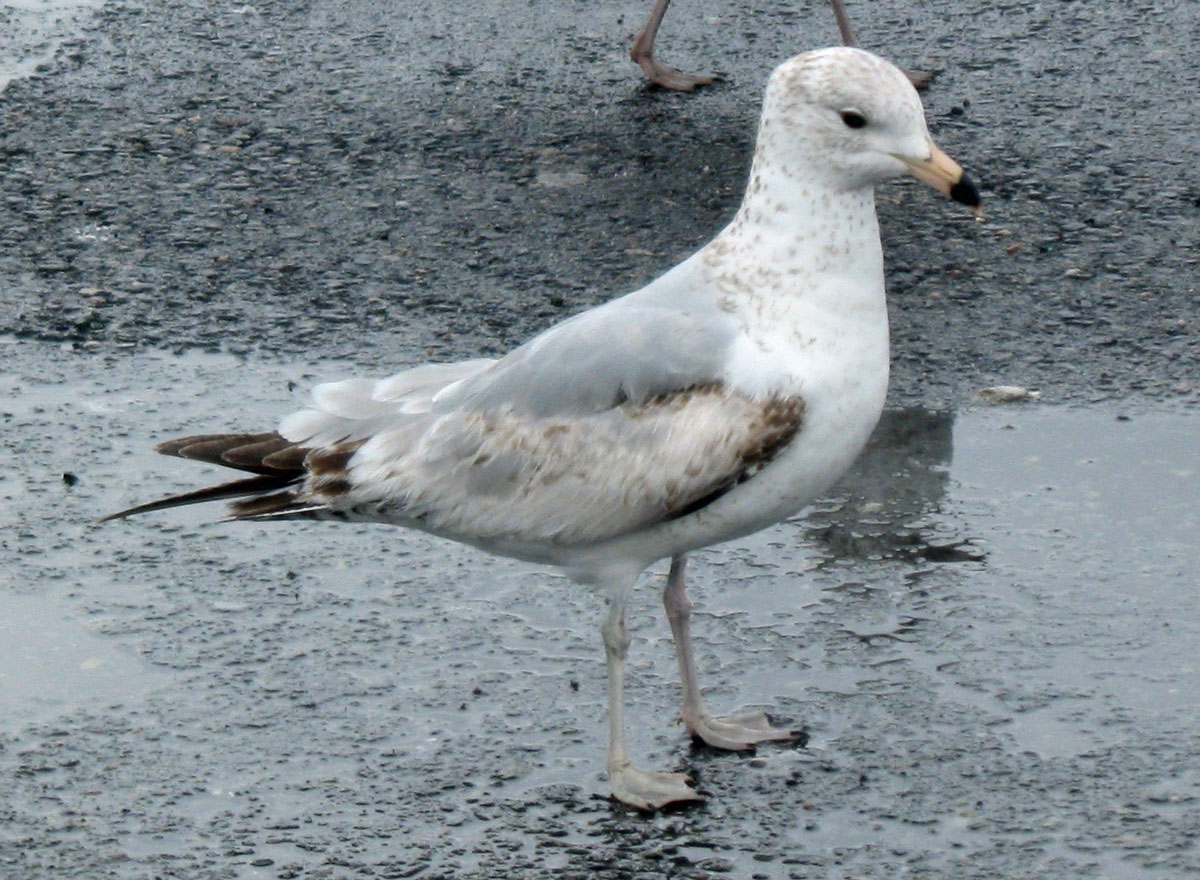
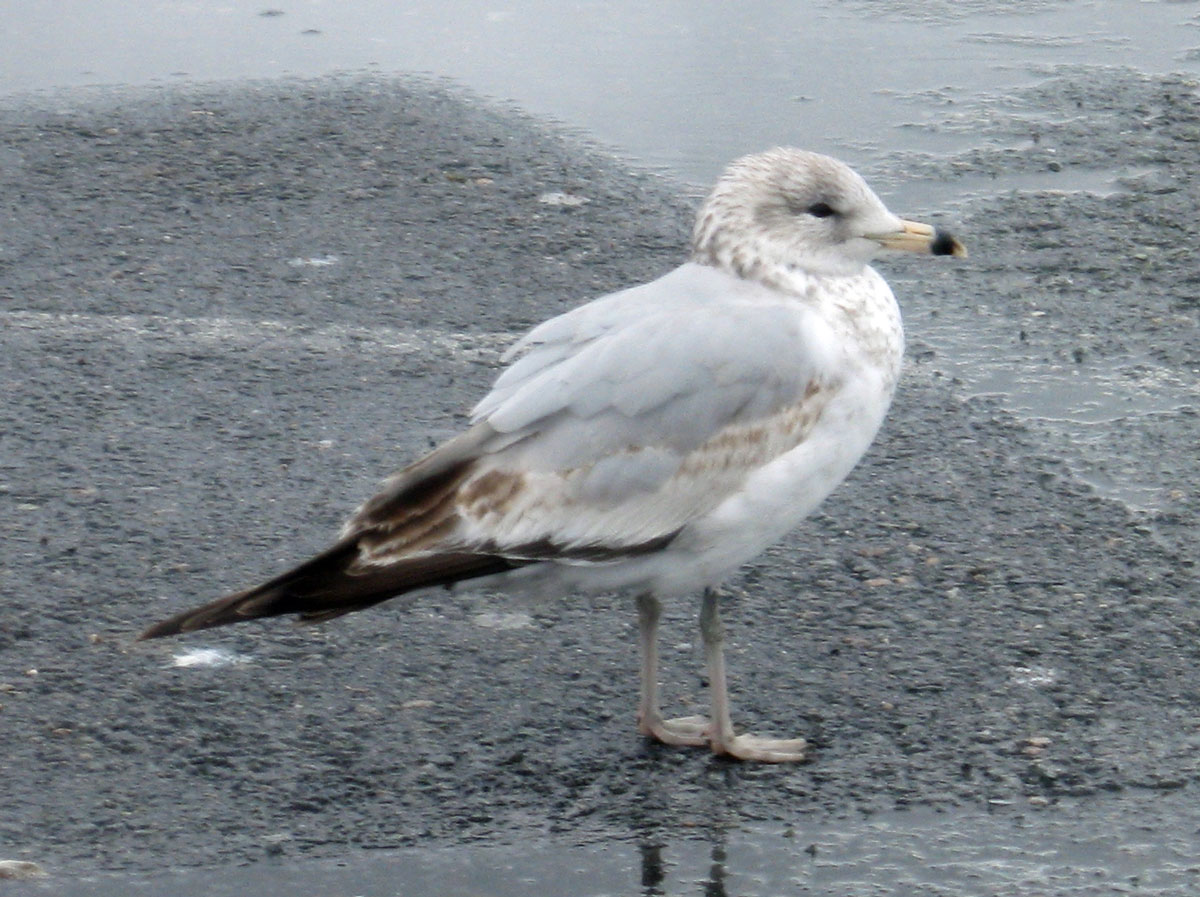
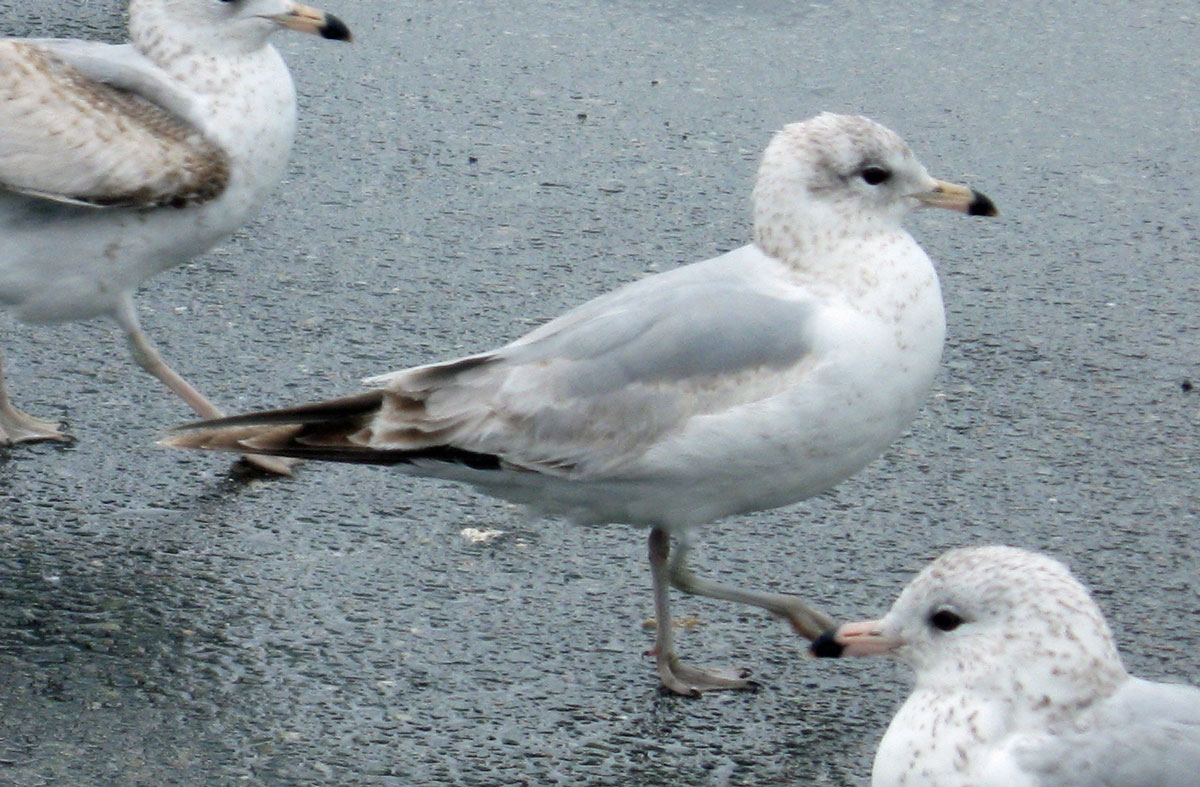
Questions
Is a whiter head and neck always associated with extremely pale and faded wing coverts in 1st spring Ring-billed Gulls?
Does Ring-billed Gull have a preformative molt? (Pyle says probably not, my photos indicate otherwise)
Are bare-parts colors and plumage colors linked as immature gulls advance towards adult appearance? In other words, is a gull with more adult-like plumage also expected to have more adult-like bare parts? (This set of birds shows no link)
References
McLaughlin, K. A. 2000. Variation in First Year Ring-billed Gull. Ontario Birds 19:114-118


Another source of difference in fading — in addition to original darkness of feathers — is wintering site and how much sun the different sites see at that season. RBGUs wintering on the Great Lakes (which can be incredibly gloomy in winter) probably don’t fade anywhere near as much as birds wintering in FL. While your April Boston birds almost certainly did not winter on the Great Lakes (for geographical reasons, if nothing else), various individuals could easily have come from very different wintering sites, with some, perhaps, being local winterers and others coming from farther south.
Nice pictures! thank for sharing with everyone!
How much does actual date of birth factor in, as there can be up to 3 months difference of hatching in different colonies and with latitude? I also see this in ducks when they are moulting into and out of eclipse plumage?
That’s a good question. I’m sure hatching date has some effect on plumage and molt, but I don’t know of any direct evidence.
Thanks for this article and photos. I have a couple of pictures which I took in Sequim, Washington in 2010. The gull in my photos has crisp new feathers — a soft brownish gray, with white edges, giving the bird a scalloped look. The tail feathers and wingtips are darker gray. What throws me off is that the bill is solid black. (Eyes are dark legs are dark but not black). So do Juvenal Ring-billed Gulls ever have completely black bills?
Hi Nina, Yes, very young Ring-billed Gulls have dark bills (with just a little pale at the base of the lower mandible). This is normal in July and August, rare as late as November. The “scalloped” and “soft” look that you describe might fit juvenile Mew Gull better, and by October or so a gull of this type in Washington would be more likely Mew than Ring-billed. If you click the “contact” tab above you can email me a photo and I’d be happy to take a look. Best, David